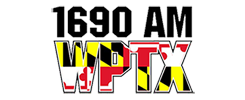Many hallmarks of the holiday season, including Christmas trees, holiday decorations, and festive meals, present potential fire hazards that contribute to an annual increase in U.S. home fires. According to the National Fire Protection Association® (NFPA®), Christmas Day and Christmas Eve are among the leading days of the year for home fires.
“December is a leading month for home fires, which is largely due to the activities we engage in during the holiday season,” said Lorraine Carli, NFPA vice president of Outreach and Advocacy. “Additionally, an increase in the use of heating equipment, driven by colder temperatures across most of the country, contributes to this heightened risk.”
Fortunately, Carli notes, many winter fires can be averted with added awareness and planning. “By knowing where potential fire hazards exist and taking basic precautions to prevent them, people can enjoy a festive, fire-free holiday season,” said Carli.
NFPA’s winter holiday resources include tips and guidelines for helping reduce the risk of fires, while the association’s latest statistics underscore the increased risk of fire during the holiday season and beyond:
Christmas trees
-
An annual average of 150 home fires involving Christmas trees?were reported by the US fire departments between 2017-2021.
-
Electrical distribution or lighting equipment, such as decorative lights, were involved in more than two of five (44 percent) home Christmas tree fires.
-
Nearly one in five Christmas tree fires (19 percent) were started by decorative lights. Eight percent were started by candles.
-
As Christmas trees dry out, they become more flammable. Thirty percent of Christmas Tree fires occur in January.
Decorations
-
An estimated average of 790 home fires began when decorations (excluding Christmas trees) caught fire. These fires caused an annual average of 4 civilian fire deaths, 33 civilian fire injuries, and $14 million in direct property damage between 2017-2021.
-
17 percent of home decoration fires occurred in December.
-
In 48 percent of fires involving decorations, the decoration was too close to a heat source such as candles or operating equipment.
Candles
-
An estimated average of 5,700 home fires (2 percent) started by candles caused an average of 80 civilian deaths (3 percent), 560 civilian injuries (5 percent), and $247 million (3 percent) in direct property damage per year between 2017 and 2021.
-
Year-round, 33 percent of fires began with candles; in December, the number jumped to 46 percent.
-
Christmas is the peak day for candle fires, at an average of 35 fires, roughly 2.5 times the daily average; Christmas Eve ranked second. New Year’s Day is ranked third, with 30 fires per day.
-
In three of every five candle fires, the candle was too close to something that could catch fire.
-
Falling asleep without extinguishing the flame was a factor in 10 percent of home candle fires and 12 percent of the associated deaths.
Cooking
-
Cooking is the leading cause of reported home fires (49 percent) and home fire injuries and the second-leading cause of home fire deaths.
-
Unattended cooking is the leading cause of home cooking fires.
-
Thanksgiving is the peak day for home cooking fires, followed by Christmas Day and Christmas Eve. Know what you can do cook safely.
In addition, home fires caused by heating equipment peak during the winter months, with nearly half (49 percent) of home heating fires occurring in December, January, and February. Put a Freeze on Winter Fires, an annual NFPA campaign with the U.S. Fire Administration (USFA), works to educate the public about ways to stay safe during the colder months, offering tip sheets and other resources to help reduce the risk of heating fires and other winter hazards.
For this release and other announcements about NFPA initiatives, research and resources, please visit the NFPA press room.
About the National Fire Protection Association® (NFPA®)
Founded in 1896, NFPA® is a global self-funded nonprofit organization devoted to eliminating death, injury, property and economic loss due to fire, electrical and related hazards. The association delivers information and knowledge through more than 300 consensus codes and standards, research, training, education, outreach and advocacy; and by partnering with others who share an interest in furthering the NFPA mission. For more information, visit www.nfpa.org. All NFPA codes and standards can be viewed online for free at www.nfpa.org/freeaccess.









